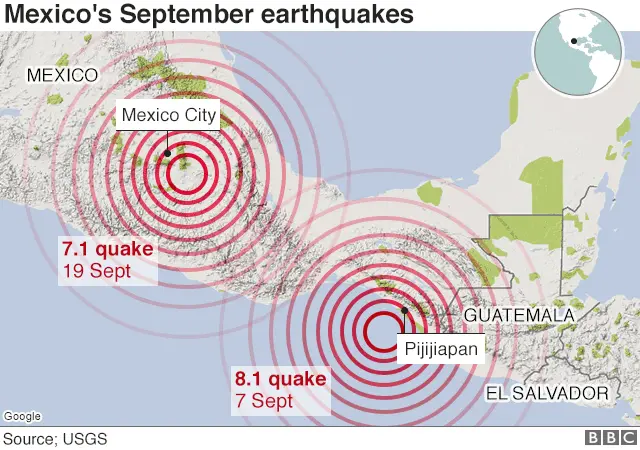Mexico quake: A visual guide
Rescue workers are searching for survivors days after a devastating earthquake hit central Mexico killing more than 273 people.
The 7.1 magnitude quake brought down dozens of buildings in the capital, Mexico City, including a school, leaving many children dead.
Rescuers are using hand signals to communicate to reduce noise
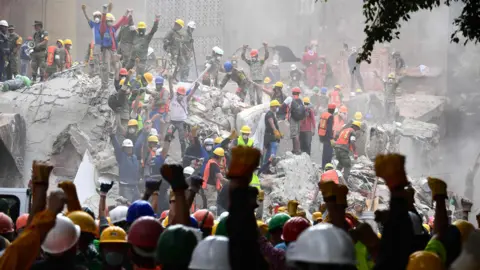 AFP
AFPAt the site of collapsed buildings across the city, amid the dust and rubble, someone might suddenly raise a fist in the air.
Rapidly, others follow suit, raising their own clenched fists, answering the call for silence and wordlessly spreading the message through the crowd.
The raised fist is just one of the hand signals developed by rescuers to quickly spread instructions to people in the immediate area silently, so they can listen for the sound of survivors.
Here's what a few of the signals mean:
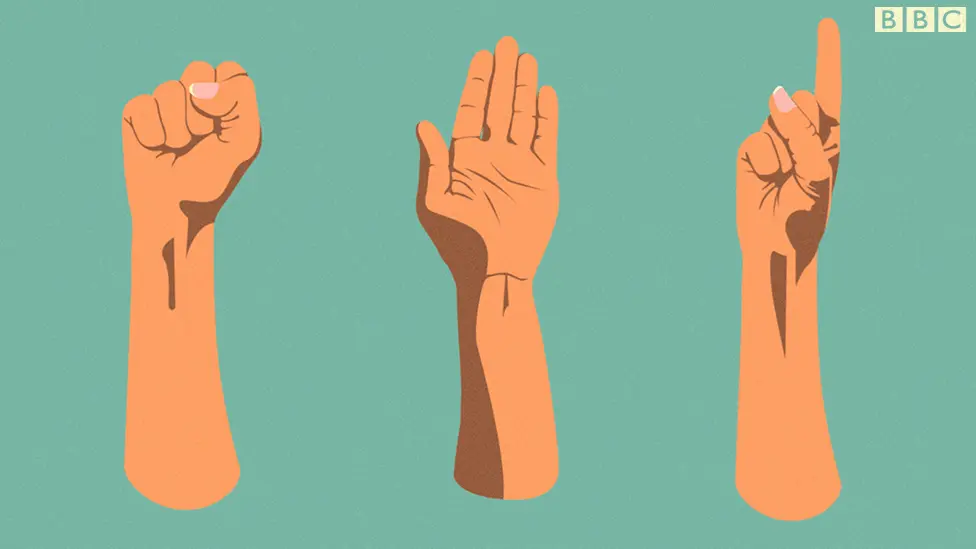 BBC
BBCFist in the air = silence
Perhaps the most important signal - for immediate silence - to allow rescuers to listen out for the cries or noises made by anyone trapped in the ruins.
Open palm = nobody move
Keeping everyone still can help those listening out for signs of life by removing any distractions. Rescue operations can also be dangerous, with the risk of material falling or changing position. One false move could end in disaster and put at risk both survivors and their rescuers.
Finger in the air = back to work
When the location of a survivor has been identified, or it's clear that no sounds are coming from within the rubble, then this is the signal to get back to work.

Although the quake hit 120km (75 miles) from Mexico City, it still toppled buildings in the capital
 BBC
BBC
The prolonged tremor, which hit at 13:14 local time (18:14 GMT) on Tuesday, is the deadliest to hit the country in more than 30 years.
Buildings swayed violently, structures fell apart and dozens collapsed entirely. Thousands of residents fled onto the streets.
Damage in Mexico City

 EPA
EPA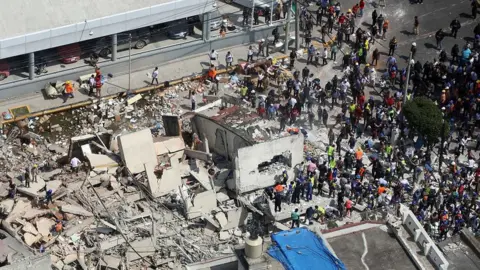 EPA
EPAJust under half of the deaths announced so far were in the capital.
As many as 26 people - 21 children and five adults - died when the Enrique Rébsamen elementary school collapsed in Mexico City's southern Coapa district, according to local media.
Rescuers believe that people may still be trapped alive in as many as 10 buildings in Mexico City alone.
Mexico's National Civil Protection System has mapped the damage caused so far.
 BBC
BBC
The tremor caused 'very strong' shaking
The earthquake was centred south-east of Mexico City near Atencingo in Puebla state, about 120km (75 miles) from the capital and had a depth of 51km, the US Geological Survey said.
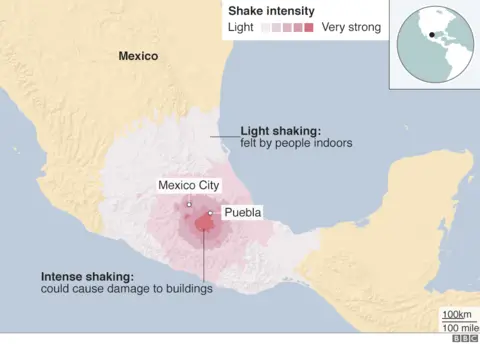 BBC
BBC
Along with Mexico City, Morelos, Puebla, Guerrero, Oaxaca and Mexico states have also been badly affected. Many experienced "very strong" shaking - a seven on a one to 10 scale of earthquake shaking intensity. This is different to the Magnitude scale, which represents the energy released in an earthquake (in this case 7.1).
At this level of intensity, people have difficulty standing, furniture is likely to overturn or break and poorly-constructed buildings will suffer considerable damage. Although some buildings were worse affected than others.
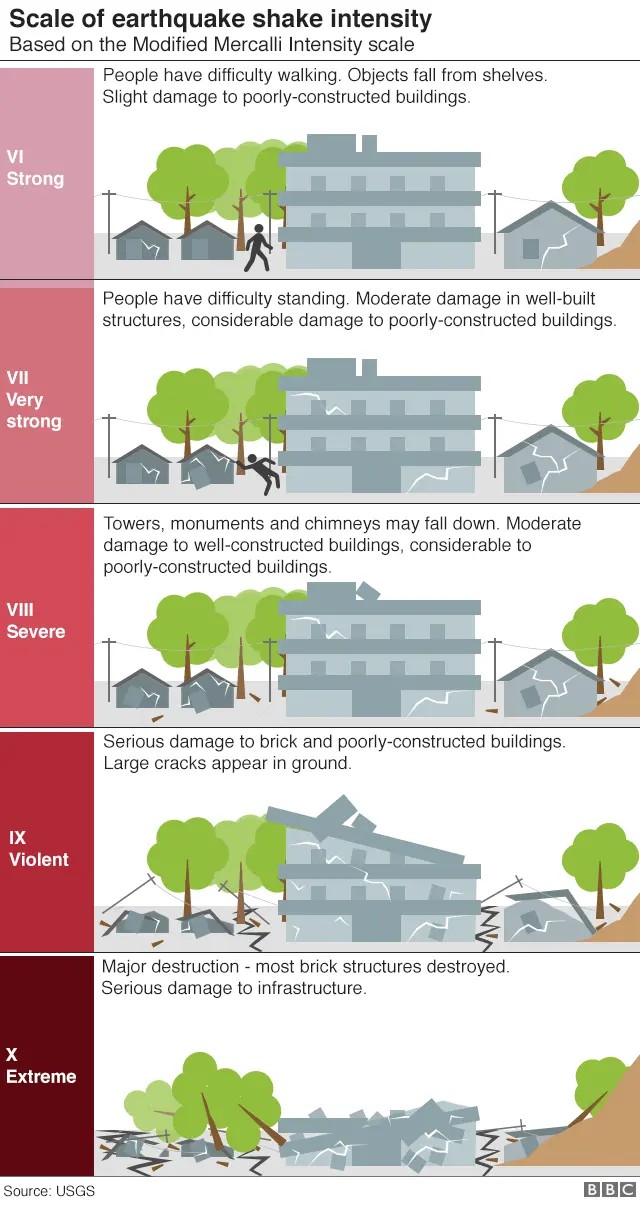


Mexico is one of the worst possible places for earthquakes
The earthquake was the second major tremor to hit Mexico in two weeks and came on the anniversary of the 1985 quake that flattened much of Mexico City, killing up to 10,000 people and leaving 30,000 others injured.
Mexico is one of the most seismically active places on Earth.
It sits on top of three of Earth's largest tectonic plates - the North American plate, the Cocos Plate, and the Pacific Plate.
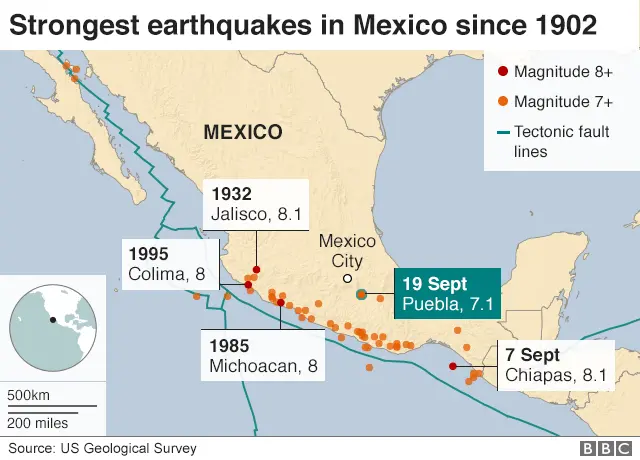
The country's two most recent earthquakes occurred when the Cocos plate, which carries the Pacific Ocean floor, travelled under the North American plate, the platform for most of the Mexican landmass.
Mexico City is especially prone to severe damage because it is built on an ancient lakebed that amplifies the effect of earthquakes.

The latest earthquake caused more damage because it was nearer populated areas
The earthquake on 7 September was more than 30 times more energetic than the latest one, but despite this, the 19 September quake caused more damage, writes the BBC's Jonathan Amos.
Tuesday's event was closer to more populated areas and in Mexico City it impacted an urban centre, which sits on the types of loose soils that make the shaking worse.
